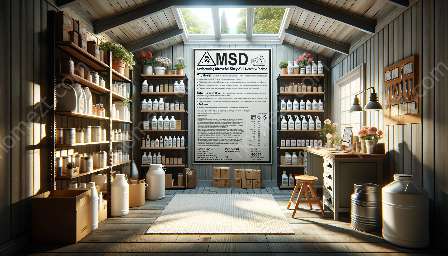Fire risk in hazardous material storage facilities is a significant concern due to the potential for catastrophic incidents that can result in harm to individuals, damage to property, and environmental contamination. Effective fire risk mitigation strategies are essential to ensure the safe storage of hazardous materials and contribute to overall home safety and security.
Understanding the Importance of Fire Risk Mitigation
Hazardous materials, including flammable, combustible, and reactive substances, must be stored in a manner that reduces the likelihood of fire and minimizes the impact in the event of an incident. Proper fire risk mitigation not only protects the storage facility but also safeguards surrounding areas, including residential neighborhoods, from potential dangers.
Best Practices for Fire Risk Mitigation
Implementing best practices for fire risk mitigation in hazardous material storage involves a comprehensive approach that encompasses various elements:
- Safe Storage Design: Utilize proper storage containers, shelving, and segregation methods to minimize the risk of fire spread.
- Fire Suppression Systems: Install and maintain fire detection and suppression systems, such as sprinklers, to swiftly respond to potential fires.
- Emergency Response Planning: Develop detailed emergency response plans that outline procedures for addressing fires and communicating with relevant authorities.
- Employee Training: Train personnel in fire prevention, emergency response, and the proper handling of hazardous materials to mitigate potential risks.
- Regular Inspections: Conduct routine inspections to identify and address potential fire hazards, including electrical issues and chemical leaks.
Connection to Safe Storage of Hazardous Materials
The principles of fire risk mitigation are closely intertwined with the safe storage of hazardous materials. By addressing fire hazards and implementing appropriate safety measures, the risk of incidents that can compromise the integrity of hazardous material storage can be significantly reduced. This ensures that the stored materials remain secure and do not pose a threat to individuals and the surrounding environment.
Contributing to Home Safety and Security
Effective fire risk mitigation in hazardous material storage does not exist in isolation. It plays a vital role in enhancing overall home safety and security by mitigating potential threats and preventing the escalation of fire-related incidents that could affect residential areas. By implementing robust fire risk mitigation practices at hazardous material storage facilities, homeowners can be assured that their communities are better protected from the hazards associated with hazardous material storage.
In conclusion, fire risk mitigation in hazardous material storage facilities is a critical consideration that aligns with the broader goals of safe storage of hazardous materials and home safety and security. By prioritizing best practices for fire risk mitigation, stakeholders can significantly reduce the potential for devastating fires and contribute to a safer and more secure environment for all.



